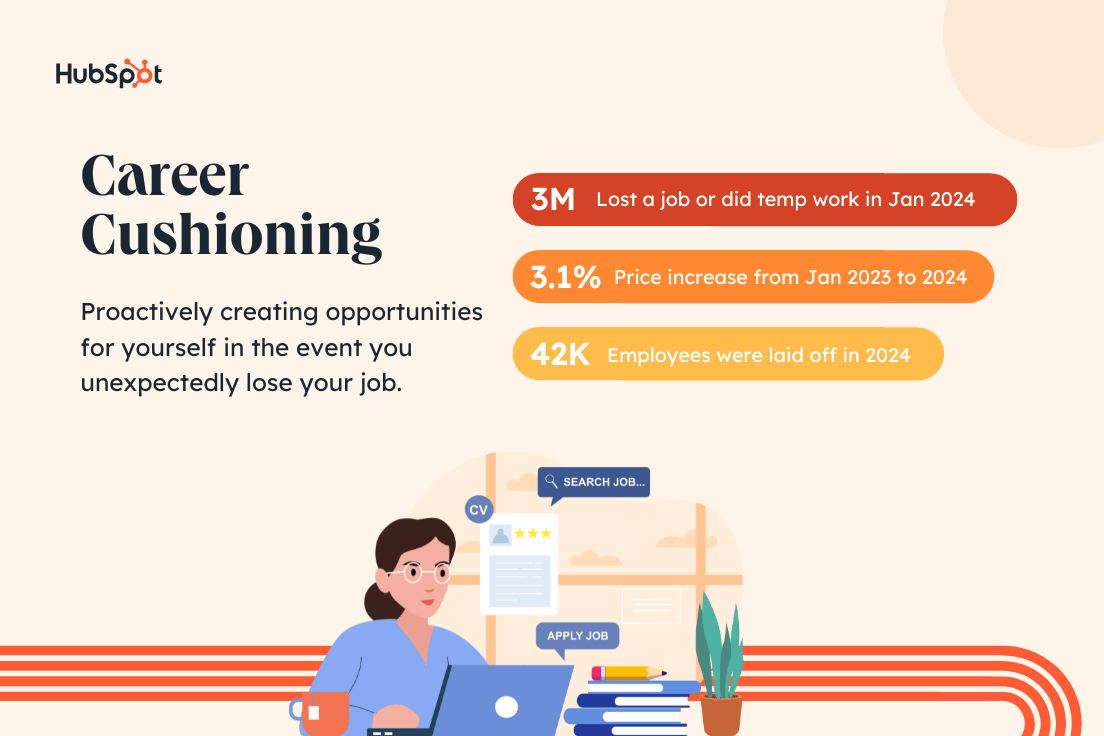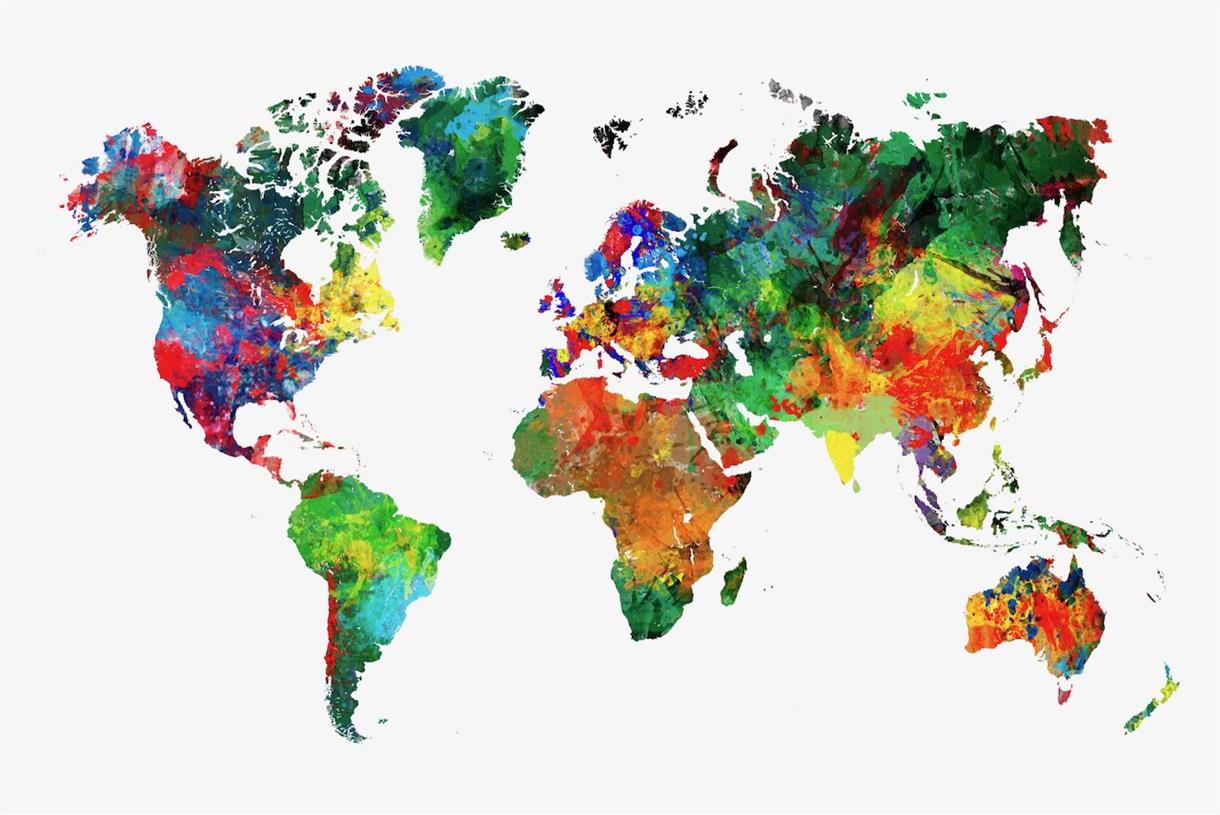What is Career Cushioning? Why You Might Want to Try It in 2024
As I started writing this article about career cushioning, I couldn’t help but wonder … am I a career cushion-er?

As I started writing this article about career cushioning, I couldn’t help but wonder … am I a career cushion-er? I have a side hustle (shoutout to CKTL Candle Co.). But it technically only “counts” if I’m using that side hustle as a sense of security in case I lose my day job as HubSpot’s Marketing Blog Editor. That’s what the concept of career cushioning is all about — and a lot of people are doing it in 2024. Table of Contents Career cushioning allows you to “cushion the blow” if you lose your job unexpectedly. It’s about being proactive and creating additional opportunities for yourself in the event of a layoff or sudden termination. This could mean actively networking for potential job opportunities, keeping your professional assets up to date, or starting a business on the side. Think of it like, “Hey, just in case this job or career doesn’t work out, I’m going to have a backup.” And, in some cases, multiple. Career cushioning isn’t specific to one job field or profession. Given the rise of inflation and increase in layoffs across industries, professionals at all levels are justifiably nervous about job security. And while the concept of career cushioning isn’t brand new, it’s definitely trending this year. I mentioned inflation and layoffs as primary reasons why people are keeping their career options open. Let’s look at some of the stats: My LinkedIn feed feels pretty reflective of this data given the number of people who are “Open to Work” after a layoff or ready for a career change. This is very much a personal decision. However, to me, the data suggests that it might not be a bad idea to have a Plan B in your back pocket. Here are some things to consider: My take? I started my candle business for fun back in 2020. But, TBH, it’s nice to know I’d still have a source of income if I lost my job tomorrow. Here are five ways to do career cushioning right in 2024. This is great advice whether you’re career cushioning or not. Skills are meant to be cultivated. Sure, the same marketing frameworks I learned while completing my MBA in 2021 may still apply. But the skills needed to be a great marketer evolve with trends and time. For example, you couldn’t have told me three years ago that I’d be using AI in my day-to-day workflow. But it’s here, and it’s a skill I had to (and wanted to) develop. Luckily, there are tons of free resources, like HubSpot Academy, that are available to help you level up your professional skill set. Even if you aren’t ready to apply for jobs just yet, regularly update your work history as you make new accomplishments at work and in life. Have you recently hit a target or goal? Did you master a new skill like we talked about in #1? Write it down. I promise, it’s easier to track those achievements on your LinkedIn or resume when they happen rather than trying to update things all at once. (Speaking from experience here.) This is especially true if you’re in a bind and need to land a new job fast. I talked about keeping your LinkedIn updated in the last tip, but it’s so much more than just a resume. LinkedIn is the perfect place to connect with like-minded people in your industry or make new professional friends. With the right network, you’ll gain access to job listings, networking events, and referral sources for new opportunities. Putting yourself out there and promoting your brand can go a long way toward creating a career cushion. Becoming an entrepreneur is not easy, but it is doable if you find something you’re passionate about. You could consider turning one of your existing hobbies into a side hustle. That’s how I became a candle business owner. Or you could pick up some extra work related to an area or skill you’re interested in. Maybe you really like to write, so you pick up some freelance hours for one of your favorite blog sites. Who knows, you may be able to turn that hustle into a full-time gig. Whatever you choose, just don’t get into the candle game. I don’t need any more competition 😉 Like I said, career cushioning is a great way to create a job safety net for yourself. But the whole point is to create a backup plan IF you need it. Of course, if you’re already looking to change fields or switch up your career path, have at it. However, the key to career cushioning is to give yourself options in the event you lose your job. Don’t unintentionally make that a reality by adding too much to your plate or neglecting your current employer. In other words, “if it ain’t broke, don’t fix it.” Just cushion it. If you ask me, it doesn’t hurt to explore new things and keep your options open. To answer the question about whether I consider myself a career cushion-er, I’m going to go with ... yes. It’s about more than just my side hustle, though. I’m always looking for chances to learn new things and grow as a person. And if that’s how you feel too, then I say it doesn’t hurt to add a little cushion.
So, what exactly is career cushioning?
Who is doing it?
Why Career Cushioning is Hot Right Now

Should you start career cushioning?
How to Cushion Your Own Career
1. Skill up in both new and existing areas.
2. Keep your LinkedIn and resume updated.
3. Nurture and expand your network.
4. Start a business or explore a side hustle.
5. Don’t risk your day job.
The Bottom Line

 AbJimroe
AbJimroe 

































